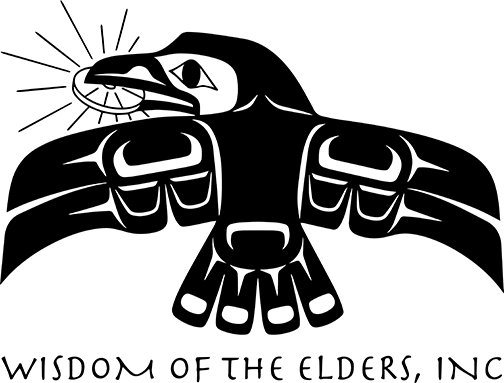
Ready for the Charge. Apsaroke. Photo by Edward S. Curtis. Courtesy of a2zcds. www.a2zcds.com Click for larger view.
The Cheyenne and the Crow
with Arlie Neskahi
From the journal of William Clark::
Capt. William Clark. March 29 th, 1805. The ice stopped running owing to some obstacle above.. Few Indians visit us today. They are watching to catch the floating buffalo which break through the ice in crossing. I observed the extraordinary dexterity of the Indians in jumping from one cake to another. Many of the cakes of ice which they pass over are not two feet square.
Arlie Neskahi:
Welcome to Wisdom of the Elders. I’m Arlie Neskahi.
It was spring. The ice was breaking up on the Missouri, and the river was already falling. Returning geese passed every day. The prairie near the village was on fire on both sides of the river, burned by the people every spring to bring new grass. In the cold, golden afternoon, children watched the white men finish six canoes, hollowed from the trunks of cottonwood trees. At the white man’s fort, the men sorted and packed their goods.
Music:
Into The Memory
John Huling
Spiritlands
Red Feather

George Catlin American, 1796 - 1872 A Crow Village on the Salmon River, 1855/1869 oil on card mounted on paperboard, 46.4 x 62.5 cm (18 1/4 x 24 5/8 in.) Paul Mellon Collection 1965.16.24 Click for larger view.
During the long Mandan winter, the captains had counseled with numerous Indian consultants, who described the Northern Missouri landscape and it’s people. But the Hidatsa had been aloof, mistrusting the Americans.
The Hidatsa, or Minataree, lived upriver from the Mandan in three villages on the Knife River. They depended on the trade from the Assiniboine and Cree who came from the North to exchange British guns and buffalo products for Hidatsa corn.
Images below are from the National Gallery of Art: www.nga.gov
Click for larger view:
Few white men had ventured above the Hidatsa villages and knew very little about Northern Missouri tribes. Hidatsa warriors, however, were well-traveled toward the west. They had raided the Blackfeet and Shoshoni a thousand miles across the plains. One Hidatsa chief presented the captains with a chart of the river.
Departing the Hidatsa and Mandan villages, Lewis and Clark continued their uncharted journey up the Missouri River through the landscape of many tribes. Yet they never spotted a single Indian.

George Catlin American, 1796 - 1872 A Small Cheyenne Village, 1861/1869 oil on card mounted on paperboard, 45.7 x 62.2 cm (18 x 24 1/2 in.) Paul Mellon Collection 1965.16.41 Click for larger view.
In today’s program, we will highlight two of those tribes: The Cheyenne and the Crow. Speaking a language of the Algonquin family, the Cheyenne, or the Tsis-Tsis-Tas, originated in the Great Lakes region, a peaceful village people who grew corn, squash and wild rice.
Southern Cheyenne Peace Chief, Lawrence Hart:
Lawrence Hart:
Anthropologist James B. Mooney does indicate this. He wrote about us well after the time we found ourselves on the high plains. And he said that “The old life is remembered in sacred tradition and would seem impossible of belief but for the documented proof of their former existence.” He was really speaking to a radical change that we had made.
Neskahi:
The Cheyenne migrated to the Missouri River and lived in fortified villages of earth lodges. Lewis and Clark observed an old village of the Cheyenne on the banks of the Missouri surrounded by a wall of earth, but it was no longer inhabited by the Cheyenne. Following the buffalo and the spiritual guidance of their medicine men, the people had migrated toward the Badlands and the Black Hills in an effort to live in peace and avoid conflicts with the Sioux.

George Catlin American, 1796 - 1872 Grassy Bluffs, Upper Missouri, 1861/1869 oil on card mounted on paperboard, 45 x 62.5 cm (17 3/4 x 24 3/4 in.) Paul Mellon Collection 1965.16.193 Click for larger view.
Due to the Fort Laramie and other treaties of the Nineteenth Century, a series of forced relocations, and the Sand Creek Massacre, the tribe split between its Northern and Southern branches. Today, the tribes live on reservations in Central West Oklahoma and South Central Montana.
Music:
Into The Memory
John Huling
Spiritlands
Red Feather
The Crow, or Absaloke, speak a language related to Sioux. Their origins may be traced to about 500 years ago, when they split off from the Hidatsa and wandered, carrying sacred tobacco seeds. The tobacco was to be harvested only for its seed. It was said that when the harvest was bountiful and the tobacco flourished, so too would the Crow people. After hundreds of years of traveling, they settled along the Yellowstone River and planted the sacred seeds in Northern Wyoming.
Crow Elder, Barney Old Coyote:

George Catlin American, 1796 - 1872 Distinguished Crow Indians, 1861/1869 oil on card mounted on paperboard, 47.1 x 63.5 cm (18 9/16 x 25 in.) Paul Mellon Collection 1965.16.20 Click for larger view.
Barney Old Coyote:
There were three bands, the Mountain Crow, the River Crow, and what they call the Kicked In The Bellies. Crow country, at the time after their separation from the Hidatsa, they settled here in the mountains of southeastern Montana, beginning at Bozeman and coming this way to the Big Horn Mountains.
So what they did was literally guarded the mountains. They didn’t have villages or anything, but they roamed that area and kept patrolling it. And they shared it with other people. And I characterize them as a true melting pot of Indian people, because they welcomed other tribes.
You belong to the Crow tribe as a state of mind, not by blood, not by heritage, not by birth even. People come to the Crow tribe, if they decide to accept that way of life, they became Crows.
Neskahi:
I’m Arlie Neskahi, and this is Wisdom of the Elders.
